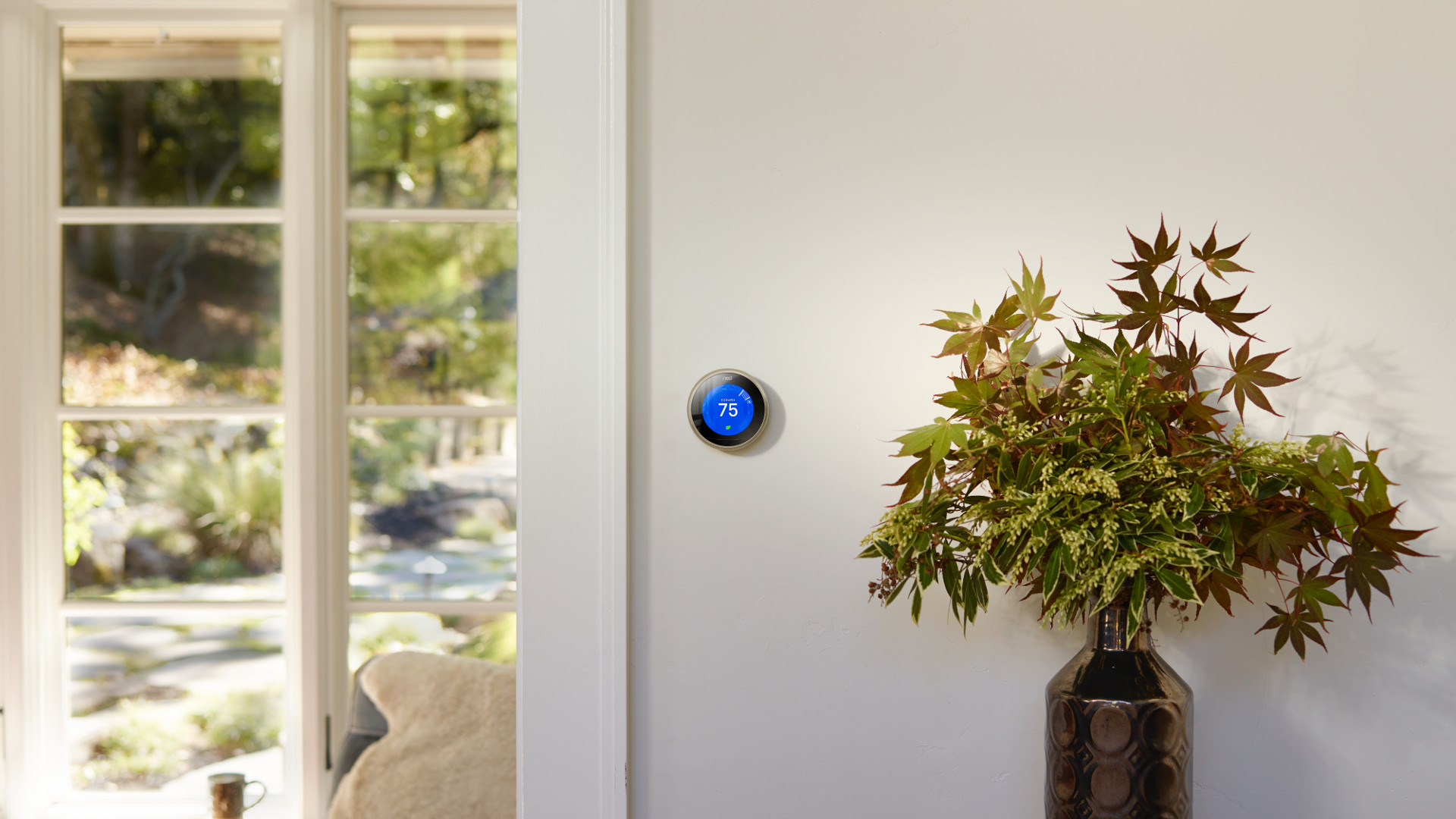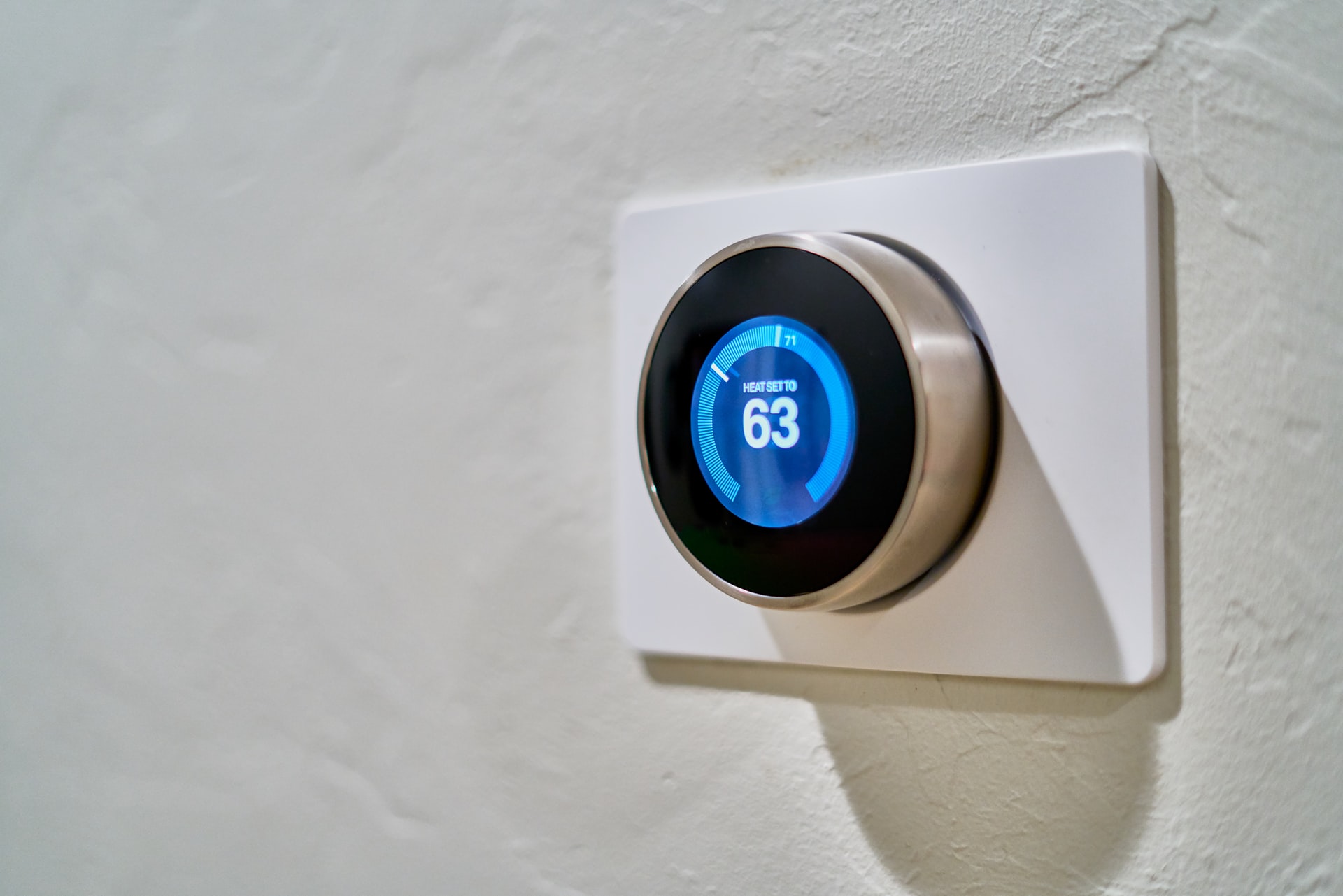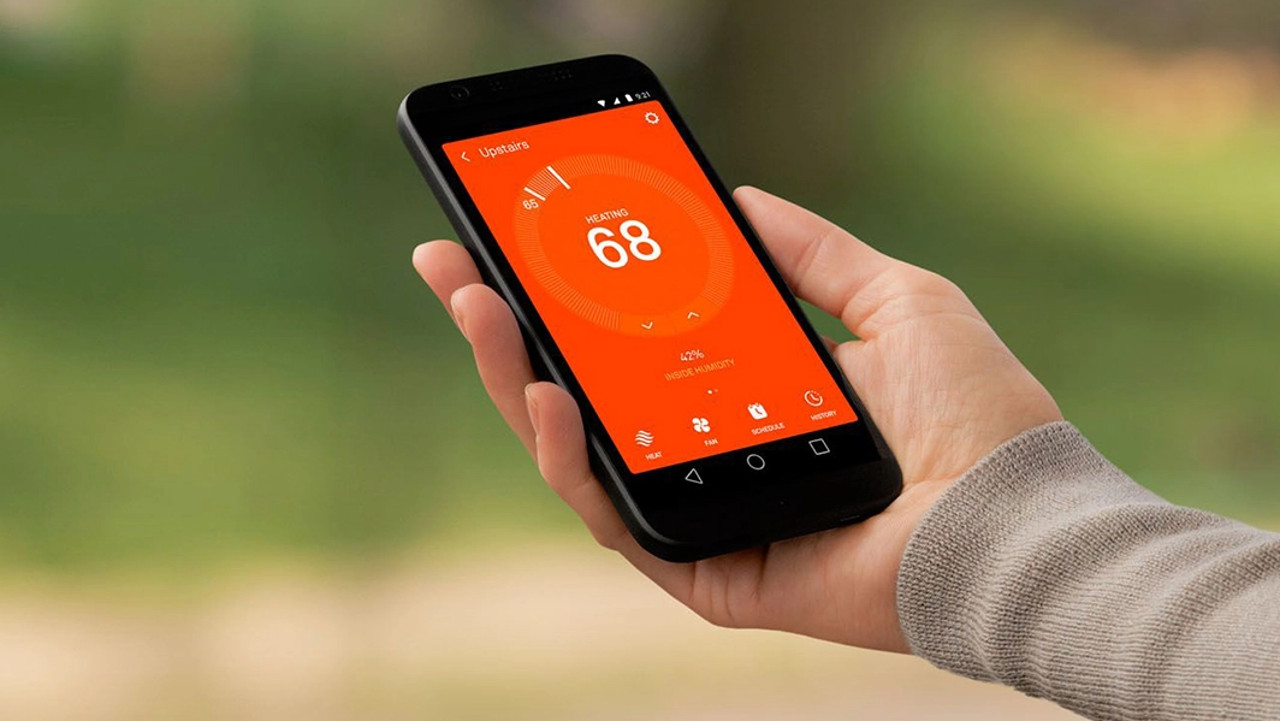What is a smart heating system? Explained - the way to save money and the environment, from home
A smart heating system could change the way you heat your home to save you money and help nature at the same time


A smart heating system is fast becoming more popular than ever as it moves from tech luxury to life necessity. The face of these systems is a smart thermostat, which you may have already seen in the form of the Google Nest Thermostat above, or other variants – as more companies jump on the smart home heating bandwagon.
Now, as energy prices climb and home heating becomes a topic of focus, these smart systems are more valuable and sought after than ever. And it's a good time to get involved as, after year of fine tuning, they're now working better than ever and, importantly, are better looking than ever before.
All that means you can turn your current thermostat into a home decor statement with a smart home thermostat – while at the same time reducing bills and even helping the environment. So are smart thermostats worth it?
And what exactly is a smart heating system, how can you get one and what will it cost?
What is a smart heating system?
At its core a smart heating system is actually very similar to your current setup. Meaning the way your home is heated will likely remain the same. The system will simply make the controls more intelligent. So if you have a combi boiler and radiators and, or underfloor heating and AC in your home, that will remain the same. But it will be your thermostat which will change.

A thermostat is a device that is able to measure the air temperature around it and turn your heating and, in some cases, cooling on and off to make sure that level stays at a set amount. So if you have this placed well in the center of your home, it'll adjust your heat and cooling to keep the most consistent temperature possible. So far, so standard thermostat.
Traditional thermostats let you set timers for heating and cooling to come on and off – with a lot of fiddly effort. Modern smart thermostats are not only easier but are actually enjoyable to use.
The Livingetc newsletters are your inside source for what’s shaping interiors now - and what’s next. Discover trend forecasts, smart style ideas, and curated shopping inspiration that brings design to life. Subscribe today and stay ahead of the curve.
Just to be clear, the smart thermostat is not to be confused with a smart meter. A smart meter is simply a way to track your energy usage in the home. Moving on.
How does a smart heating system work?
Since the thermostat is at the heart of a smart heating system it's that which you need to know about. Unlike those that went before, these are usually good looking with touch or wheel controls and large color displays that light up so you can see if day or night. But the key here is that they're also WiFi connected to the internet.
That means you can control your smart thermostat, and your home heating and cooling, from a smartphone, tablet, computer – just about anything that'll get you to a browser or app that's online. That makes setting up a timer schedule super simple. But this does so much more.

What makes thermostats smart?
Imagine if you were going out everyday, to work, and your heating timer was set to turn on and off so the house cooled and heated to avoid wasting energy while you're out. That's great, until you factor in more people living there, less regularity to movements, drying clothes, and plenty more real life scenarios that make timers defunct.
A smart thermostat will be able to detect as people come and go, adjusting the heating or cooling as needed. And you can also do it from your phone manually, anywhere. Many will even work with your smartphone location so they can tell when you're nearing home to get the house to the right temperature for when you get to the front door. Home has never felt so homely.
These also work with smart voice controlled systems like Google Assistant, Apple's Siri, Amazon Alexa and more. All that means you can tell your Echo device, smartphone or even car on approaching home, to set the thermostat to an ideal temperature. Watching a movie and want to get cosy without moving? Just tell your smart device to turn up the heat.
How do smart thermostats control temperature?
One of the issues with thermostats, smart or otherwise, is that they can only detect the temperature in one part of the house. So while the thermostat in the hall may always be the same temperature, a room with the door closed could get really hot or cold. This is where smart radiator valves come in.

Many systems also offer these valves so you can actually set the temperature of individual rooms or zones. Want to have downstairs turn off overnight as you keep the bedrooms upstairs at the right temperature only? This can be done, keeping you comfy and saving you money at the same time.
It's also worth noting these can work in conjunction with other smart devices. Link up a set so when you tell you smart device it's bedtime, the lights go down and heating lowers ready for bed, for example.
So which is the best smart heating system for you? It depends on a number of factors including which brand you already use in your smarthome and want to integrate with. Also what the device looks like, how much it costs, if it controls hot and cold, and if you need room by room controls, all come into consideration.

Luke is a veteran journalist and editor of over two decades where he has written about everything but specialises is technology, science, health and fitness, smart homes and health. He contributes to Real Homes, T3, Tom's Guide and TechRadar, among many other titles. As a father of two, any spare time he gets is enjoyed surfing, reading, hiking, camping and generally getting out in nature.